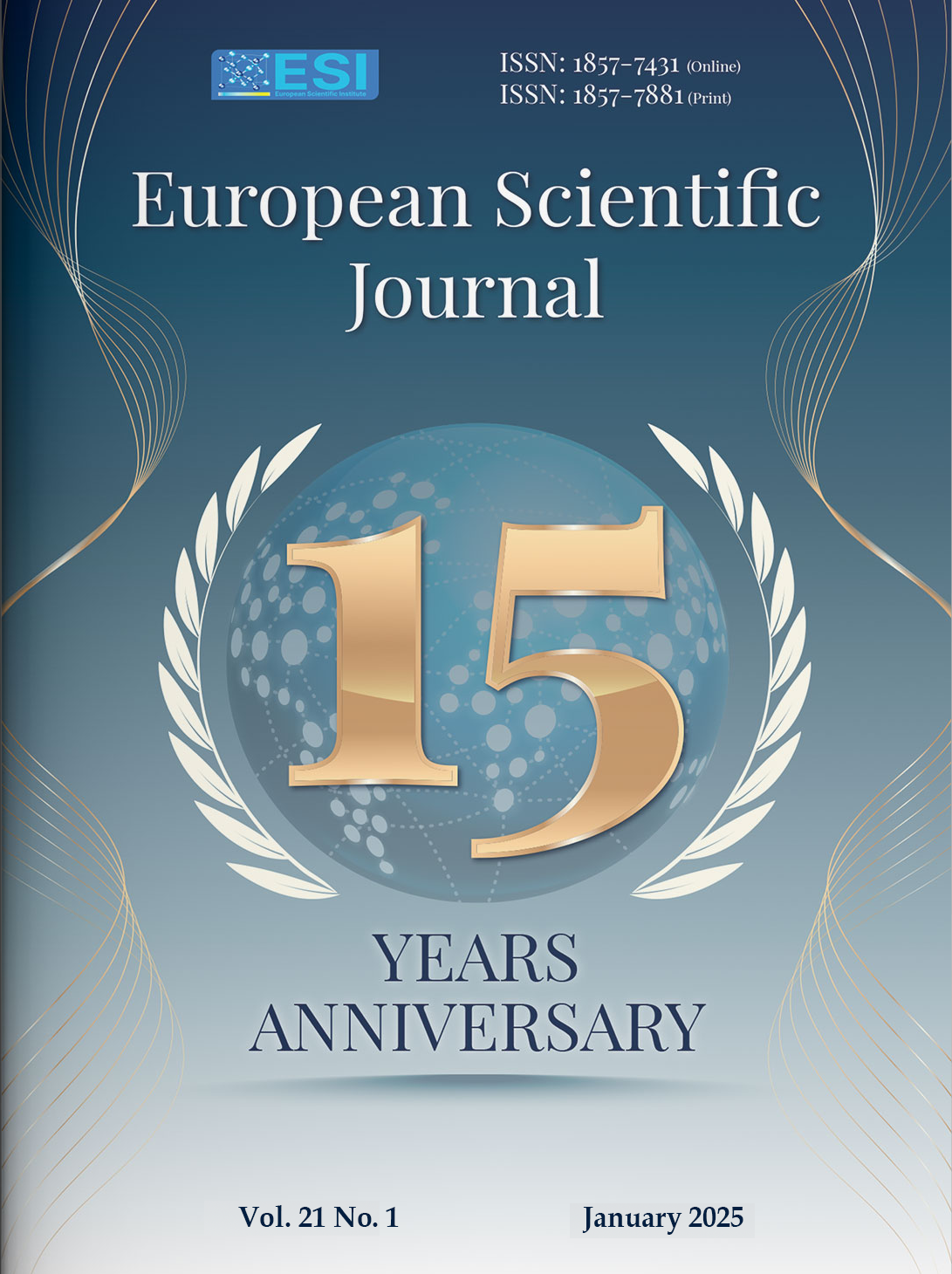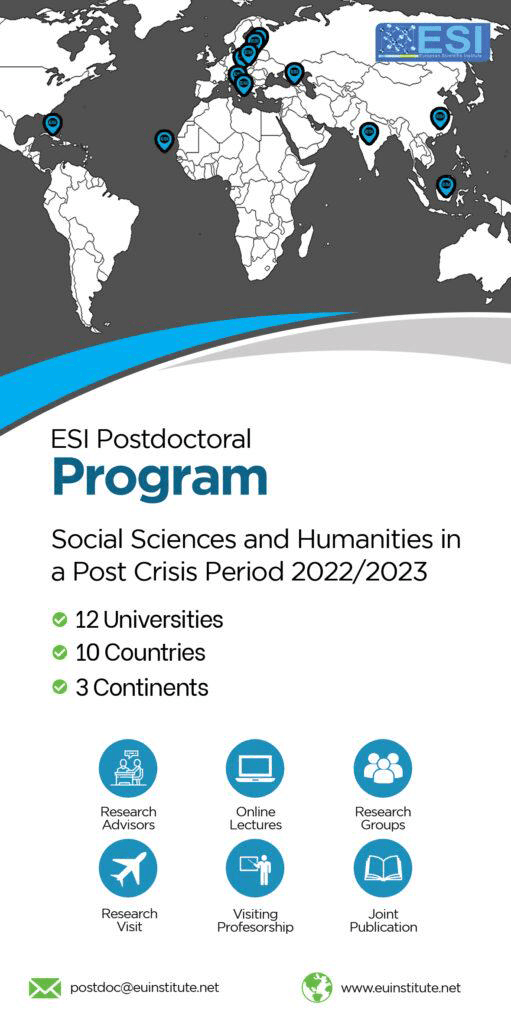Drivers, Barriers, and Impact of Digitalization on Sustainable Rural Development, Focusing on Some Regions of Albania
Abstract
The rural sector is one of the most important sectors in Albania, referring to the contribution to economic growth, gross domestic product, and level of employment in the country. Increasing the productivity and performance of agricultural farms, efficiency of resource use, cooperation between small farmers, access to financing, implementation of technology, food quality and safety, are considered some of the main challenges for the sustainable development of this sector. An important instrument to face these challenges is the digitization of this sector, through the use of technology and digital platforms, with the aim of increasing the competitiveness and productivity of agricultural farms. The digitalization process holds the potential to bring about a significant change in how agriculture functions, in terms of tools, technologies, platforms and innovative approaches that support precision agriculture and efficient management of resources. In function of the purpose of the study, the questionnaire was designed to collect information from the farmers (interviewers). Based on the data of INSTAT & MARD, (2023) for the dominant activities and typology of farms, 938 questionnaires were completed with farmers for the regions selected in the study. The methodology used for this paper is based on the collection, processing, analysis and interpretation of data and indicators, focusing on the drivers, barriers and impact of digitalization on sustainable rural development in Albania. The data were analysed and processed with the SPSS program, in accordance with the purpose and research objectives of the study. Based on the data collected in this study, digital technologies in agriculture are perceived positively by interviewed farmers. The results show that the digitalization process in the rural sector is slow and faces several barriers and challenges, such as the small size of the farms, limited digital skills of farmers, lack of resources to implement digital technologies, and limited digital infrastructure in rural areas.
Downloads
Metrics
PlumX Statistics
References
2. Accorsi, R., Bortolini, M., Baruffaldi, G., Pilati, F., & Ferrari, E. (2017). Internet-of-things paradigm in food supply chains control and management. Procedia Manufacturing, Vol. 11, pp. 889-895. doi: 10.1016/j.promfg.2017.07.192.
3. Ayre, M., Mc Collum, V., Waters, W., Samson, P., Curro, A., Nettle, R., & Reichelt, N. (2019). Supporting and practising digital innovation with advisers in smart farming. NJAS-Wageningen Journal of Life Sciences, 90, 100302. https://doi.org/10.1016/j.njas.2019.05.001.
4. Balayev, A. R., & Mirzayev, S. N. (2022). Digital agricultural technologies for sustainable rural development: opportunities and barriers. International Scientific Conference, Engineering for Rural Development, 2022, pp. 34-40. DOI: 10.22616/ERDev.2022.21.TF009.
5. Basso, B., & Antle J. (2020). Digital agriculture to design sustainable agricultural systems. Nature Sustainability, Vol. 3, pp, 254-256. DOI: 10.1038/s41893-020-0510-0.
6. Benke, K., & Tomkins, B. (2017). Future food-production systems: vertical farming and controlled-environment agriculture. Sustainability: Science, Practice and Policy, 13(1), 13-26. https://doi.org/10.1080/15487733.2017.1394054.
7. Birner, R., Daum T., & Pray, C. (2021). Who drives the digital revolution in agriculture? A review of supply‐side trends, players and challenges. Applied Economic Perspectives and Policy, Vol. 43/4, pp. 1260-1285. https://doi.org/10.1002/aepp.13145.
8. Brunori, G., Rolandi, S., & Arcuri, S. (2022). Digitalisation of Rural Areas. SHERPA Discussion Paper. pp. 1-24. DOI: 10.5281/zenodo.6421292.
9. Burkitbayeva, S., & Swinnen, J. (2018). Smallholder agriculture in transition economies. Journal of Agrar Change, Vol.18, pp. 882-892. doi.org/10.1111/joac.12284.
10. Domi, S., & Arapi, F. (2021). Examining digital competencies along agriculture value chain: the case of Malësi e Madhe, Belsh, Korçë. Food and Agriculture Organization (FAO) and International Labour Organization (ILO), Draft Report, 2021.
11. Ehlers, M. H., Huber, R., & Finger, R. (2021). Agricultural policy in the era of digitalisation. Food Policy 100: 102019. https://doi.org/10.1016/j.foodpol.2020.102019.
12. El Bilali, H., & Allahyari, M.S. (2018). Transition towards sustainability in agriculture and food systems: role of information and communication technologies. Information Processing in Agriculture, 5, 456-464. doi.org/10.1016/j.inpa.2018.06.006.
13. Ferrari, A., Bacco, M., Gaber, K., Jedlitschka, A., Hess, S., Kaipainen, J., Koltsida, P., Toli, E., & Brunori, G. (2022). Drivers, barriers and impacts of digitalisation in rural areas from the viewpoint of experts. Information and Software Technology, 106816. https://doi.org/10.1016/j.infsof.2021.106816.
14. Fielke, S., Taylor, B., & Jakku, E. (2020). Digitalisation of agricultural knowledge and advice networks: A state of the art review. Agricultural Systems, 180, 102763. https://doi.org/10.1016/j.agsy.2019.102763.
15. Finger, R. (2023). Digital innovations for sustainable and resilient agricultural systems. European Review of Agricultural Economics, Vol 50 (4), pp. 1277–1309. doi: https://doi.org/10.1093/erae/jbad021
16. Giua, C., Materia V., & Camanzi, L. (2020). Management information system adoption at the farm level: evidence from the literature. British Food Journal, Vol. 123/3, pp. 884-909. https://doi.org/10.1108/BFJ-05-2020-0420.
17. INSTAT. (2023). Online Database 2022&2023. Available at: http://databaza.instat.gov.al/; https://www.instat.gov.al/al/statistika/.
18. ITU & FAO. (2020). Status of Digital Agriculture in 18 countries of Europe and Central Asia. Food and Agriculture Organization of the United Nations (FAO) or of the International Telecommunication Union (ITU), Geneva, Switzerland. https://www.fao.org/3/ca9578en/CA9578EN.pdf.
19. ITU & FAO. (2021). Digital Excellence in Agriculture in Europe and Central Asia - Call for good practices in the field of digital agriculture. Food and Agriculture Organization of the United Nations (FAO) or of the International Telecommunication Union (ITU), Geneva, Switzerland. https://www.fao.org/3/cb6098en/cb6098en.pdf.
20. Khanna, M. (2021). Digital Transformation of the Agricultural Sector: Pathways, Drivers and Policy Implications. Applied Economic Perspectives and Policy, Vol. 43/4, pp, 1221-1242. doi.org/10.1002/aepp.13103.
21. Kitole, A. F., Mkuna, E., & Sesabo, K. J. (2024). Digitalization and agricultural transformation in developing countries: Empirical evidence from Tanzania agriculture sector. Smart Agricultural Technology, Vol. 7, 2024, 100379. https://doi.org/10.1016/j.atech.2023.100379.
22. Klerkx, L., Jakku, E., & Labarthe, P. (2019). A review of social science on digital agriculture, smart farming and agriculture 4.0: New contributions and a future research agenda. NJAS - Wageningen Journal of Life Sciences, 90-91. doi.org/10.1016/j.njas.2019.100315.
23. Kukk, M., Põder, A., & Viira, A.H. (2022). The role of public policies in the digitalisation of the agri-food sector. A systematic review, NJAS: Impact in Agricultural and Life Sciences, 94(1), 217-248. https://doi.org/10.1080/27685241.2022.2147870.
24. Lajoie-O’Malley, A., Bronson, K., Van der Burg, S., & Klerkx, L. (2020). The future(s) of digital agriculture and sustainable food systems: An analysis of high-level policy documents. Ecosystem Services, 45 (2020). doi.org/10.1016/j.ecoser.2020.101183.
25. Lieder S., & Schröter-Schlaack C. (2021). Smart farming technologies in arable farming: towards a holistic assessment of opportunities and risks. Sustainability, 13, 6783. https://doi.org/10.3390/su13126783.
26. Ma, W., McKay, A., Rahut, D. B., & Sonobe, T. (2023). An introduction to rural and agricultural development in the digital age. Review of Development Economics, 27(3), 1273-1286. https://doi.org/10.1111/rode.13025.
27. Mahdad, M., Hasanov, M., Isakhanyan, G., & Dolfsma, W. (2022). A smart web of firms, farms and internet of things (IOT): enabling collaboration-based business models in the agri-food industry. British Food Journal, 124 (6), 1857-1874. doi 10.1108/BFJ-07-2021-0756.
28. MARD (Ministry of Agriculture and Rural Development). (2022). Rural Development Programme 2021-2027, Under Instrument for Pre-Accession Assistance (IPA). https://bujqesia.gov.al/wp-content/uploads/2022/09/Programi-IPARD-III_2021-2027.
29. Martens, K., & Zscheischler, J. (2022). The Digital Transformation of the Agricultural Value Chain: Discourses on Opportunities, Challenges and Controversial Perspectives on Governance Approaches. Sustainability, 14, 3905. doi.org/10.3390/su14073905.
30. Mathidle, A., Hamadi, B., Condor, R., Fadil, N., & Fournes, C. (2022). Exploring the Digitalization in Agriculture and its Paradoxes: Evidence from a Comparative Study with Small French Companies. Studies in Agricultural Economics, 2022, 124 (2), pp.44-58. https://doi.org/10.7896/j.2305.
31. Miller, C., Saroja, V.N., & Linder, C. (2013). ICT uses for inclusive agricultural value chains. https://agriprofocus.com/upload/post/ICTUSESofAgVC.pdf.
32. Monda, A., Feola, R., Parente, R., Vesci, M., & Botti, A. (2023). Rural development and digital technologies: a collaborative framework for policy-making. Transforming Government: People, Process and Policy, Vol. 17, No. 3, pp. 328-343. https://doi.org/10.1108/TG-12-2022-0162.
33. Mulliri, J., Baraku, B., & Shahu, E. (2022). Digital technology - the case of Albanian agriculture. International Journal of Economics, Commerce and Management, United Kingdom, Vol. X, Issue 3, March 2022, pp. 106-112. http://ijecm.co.uk/.
34. Nakasone, E., Torero, M., & B. Minten. (2014). The Power of Information: The ICT Revolution in Agricultural Development. Annual Review of Resource Economics, Vol. 6: 533-550. doi.org/10.1146/annurev-resource-100913-012714.
35. Nogales, E. G., & Casari, G. (2023). Promoting the digitalization of small and medium-sized agrifood enterprises in Asia and the Pacific. Bangkok, FAO. https://www.fao.org/3/cc8826en/cc8826en.pdf
36. OECD. (2022). The Digitalisation of Agriculture: A Literature Review and Emerging Policy Issues. OECD Publishing. https://www.oecd.org/publications/the-digitalisation-of-agriculture-285cc27d-en.htm.
37. Passarelli, M., Bongiorno, G., Cucino, V., & Cariola, A. (2023). Adopting new technologies during the crisis: an empirical analysis of agricultural sector. Technological Forecasting and Social Change, Vol. 186, p.122106. https://doi.org/10.1016/j.techfore.2022.122106.
38. Poppe, K., Vrolijk, H., & Dijk, R. (2021). Design of a System for Information Transfer to Reduce Administrative Burdens in the Agrifood Sector. Int. J. Food System Dynamics, 12 (4), 2021, 301 – 313. doi: http://dx.doi.org/10.18461/ijfsd.v12i4.92.
39. Prasetyo, P. E., & Setyadharma, A. (2022). Digitalization Technology for Sustainable Rural Entrepreneurship and Inequality. Journal of Human Resource and Sustainability Studies, 10, 464-484. https://doi.org/10.4236/jhrss.2022.103028.
40. Reis, J., Amorim, M., Melão, N., Cohen, Y., & Mário R. (2020). Digitalization: A Literature Review and Research Agenda. Chapter, March 2020. In: Z. Anisic et al. (Eds.): IJCIEOM 2019, LNMUINEN, pp. 443–456, 2020. DOI: 10.1007/978-3-030-43616-2_47
41. Reis, J., Amorim, M., Melão, N., & Matos, P. (2018). Digital transformation: a literature review and guidelines for future research, 411-421. In: Rocha, A., Adeli, H., Reis, L.P. and Costanzo, S. (eds.): Trends and Advances in Information Systems and Technologies. WorldCIST’18 2018. Advances in Intelligent Systems and Computing, vol 745. Springer. https://doi.org/10.1007/978-3-319-77703-0_41.
42. Rijswick, K., Klerkx, L., & Turner, J.A. (2019). Digitalisation in the New Zealand Agricultural Knowledge and Innovation System: Initial understandings and emerging organisational responses to digital agriculture. NJAS - Wageningen Journal of Life Sciences, 90-91, 100313. https://doi.org/10.1016/j.njas.2019.100313.
43. Rolandi, S., Brunori, G., Bacco, M., & Scotti, I. (2021). The Digitalization of Agriculture and Rural Areas: Towards a Taxonomy of the Impacts. Sustainability, 13, 5172. doi.org/10.3390/su13095172.
44. Salemink, K., Strijker, D., & Bosworth, G. (2017). Rural development in the digital age: A systematic literature review on unequal ICT availability, adoption, and use in rural areas. Journal of Rural Studies, 54, 360-371. https://doi.org/10.1016/j.jrurstud.2015.09.001.
45. Šermukšnyte-Alešiuniene, K., & Melnikiene, R. (2024). The Effects of Digitalization on the Sustainability of Small Farms. Sustainability 2024, 16, 4076. https://doi.org/10.3390/su16104076.
46. Shepherd, M., Turner, J. A., Small, B., & Wheeler, D. (2020). Priorities for science to overcome hurdles thwarting the full promise of the ‘digital agriculture’ revolution. Journal of the Science of Food and Agriculture, 100(14), 5083-5092. DOI:10.1002/jsfa.9346.
47. Spielman, D., Lecoutere, E., Makhija S., & Campenhout V. B. (2021). Information and Communications Technology (ICT) and Agricultural Extension in Developing Countries. Annual Review of Resource Economics, 13, 177-201. DOI: 10.1146/annurev-resource-101520-080657.
48. Sridhar, A., Ponnuchamy, M., Kumar P. S., Kapoor, A., Vo, Dai-Viet. N., & Rangasamy, G. (2023). Digitalization of the agro-food sector for achieving sustainable development goals: a review. Sustainable Food Technology, 2023, 1, 783–802. https://doi.org/10.1039/d3fb00124e.
49. Stoyancheva, D., & Doncheva, D. (2023). Effects of Digitalization and Intangible Assets in the Crop Production Sector. SHS Web of Conferences 176, 03003, (2023). https://doi.org/10.1051/shsconf/202317603003 BRD2023.
50. Sylvester, G., Davis, K., Gammelgaard, J., & Preissing, J. (2021). Smart farmers - Learning with digital technologies. FAO and IFPRI, report.doi.org/10.4060/cb7947en.
51. Tomorri, I., Domi, S., Çera, G., Keco, R., & Kapaj, I. (2024). Examination of the importance and level of application of digitization in the rural sector, the case of Albania. WSEAS Transactions on Business and Economics, Volume 21, 2024, pp. 528-543. DOI: 10.37394/23207.2024.21.44.
52. Trendov, N. M., Varas, S., & Zeng, M. (2019). Digital technologies in agriculture and rural areas. FAO, Status report. Rome, Italy. https://www.fao.org/3/ca4887en/ca4887en.pdf.
53. Verdouw, C., Tekinerdogan, B., Beulens, A., & Wolfert, S. (2021). Digital twins in smart farming. Agricultural Systems, Vol. 189, 103046, 1-19. doi.org/10.1016/j.agsy.2020.103046.
54. Wolfert, S., Ge, L., Verdouw, C., & Bogaardt, M. J. (2017). Big data in smart farming–a review. Agricultural Systems, 153, 69-80. https://doi.org/10.1016/j.agsy.2017.01.023.
55. WB (World Bank). (2016). Will digital technologies transform agriculture in developing countries? Policy Research Working Paper 7669. Washington, D.C. World Bank Group. http://documents.worldbank.org/curated/en/481581468194054206/Will-digital-technologies-transform-agriculture-in-developing-countries.
Copyright (c) 2025 Ilir Tomorri, Remzi Keco, Joana Shima, Kejsi Tomorri

This work is licensed under a Creative Commons Attribution 4.0 International License.








